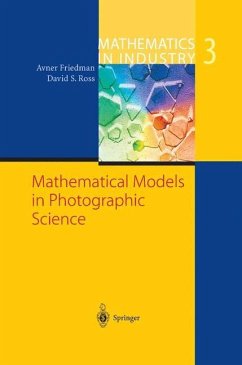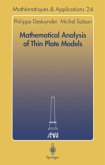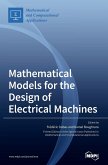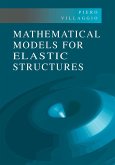This book presents mathematical models that arise in current photographic science. The book contains seventeen chapters, each dealing with one area of photographic science, and a final chapter containing exercises. Each chapter, except the two introductory chapters and the last one, begins with general background information at a level understandable by graduate and undergraduate students. It then proceeds to develop a mathematical model, using mathematical tools such as ordinary differential equations, partial differential equations, and stochastic processes. Next, some mathematical results are mentioned, often providing a partial solution to problems raised by the model. Finally, most chapters include open problems. The last chapter of the book contains "Modeling and Applied Mathematics" exercises based on the material presented in the earlier chapters.These exercises are intended primarily for graduate students and advanced undergraduates.
th Although photography has its beginning in the 17 century, it was only in the 1920's that photography emerged as a science. And as with other s- ences, mathematics began to play an increasing role in the development of photography. The mathematical models and problems encountered in p- tography span a very broad spectrum, from the molecular level such as the interaction between photons and silver halide grains in image formation, to chemical processing in ?lm development and issues in manufacturing and quality control. In this book we present mathematical models that arise in today's p- tographic science. The book contains seventeen chapters, each dealing with oneareaofphotographicscience.Eachchapter,exceptthetwointroductory chapters, begins with general background information at a level understa- able by graduate and undergraduate students. It then proceeds to develop a mathematical model, using mathematical tools such as Ordinary Di?erential Equations, Partial Di?erential Equations, and Stochastic Processes. Next, some mathematical results are mentioned, often providing a partial solution to problemsraisedby the model.Finally,mostchaptersinclude problems.By the nature of the subject, there is quite a bit ofdisparity in the mathematical level of the various chapters.
th Although photography has its beginning in the 17 century, it was only in the 1920's that photography emerged as a science. And as with other s- ences, mathematics began to play an increasing role in the development of photography. The mathematical models and problems encountered in p- tography span a very broad spectrum, from the molecular level such as the interaction between photons and silver halide grains in image formation, to chemical processing in ?lm development and issues in manufacturing and quality control. In this book we present mathematical models that arise in today's p- tographic science. The book contains seventeen chapters, each dealing with oneareaofphotographicscience.Eachchapter,exceptthetwointroductory chapters, begins with general background information at a level understa- able by graduate and undergraduate students. It then proceeds to develop a mathematical model, using mathematical tools such as Ordinary Di?erential Equations, Partial Di?erential Equations, and Stochastic Processes. Next, some mathematical results are mentioned, often providing a partial solution to problemsraisedby the model.Finally,mostchaptersinclude problems.By the nature of the subject, there is quite a bit ofdisparity in the mathematical level of the various chapters.
This book provides an interesting and well documented presentation of mathematical topics related to photographic sciences. [...] This is an attractive and easy to read book, which is characterized by a valuable (in the reviewer¿s opinion) feature: each chapter covers the whole path from the phenomenological analysis and interpretation of the real system, to modeling, statement of problems related to the application of models, an outline of qualitative analysis, and finally to perspectives and open problems. This book is recommended to applied mathematicians interested in industrial mathematics and is intended for applications and the development of mathematical methods for problems generated from technology. It is also a good text for advanced university courses on mathematical modeling to be joined to courses on computational methods. Applied mathematicians will find a description of open problems which are definitely challenging even for experienced mathematicians. MathSciNet 2004. Nicola Bellomo (I-TRNP)









